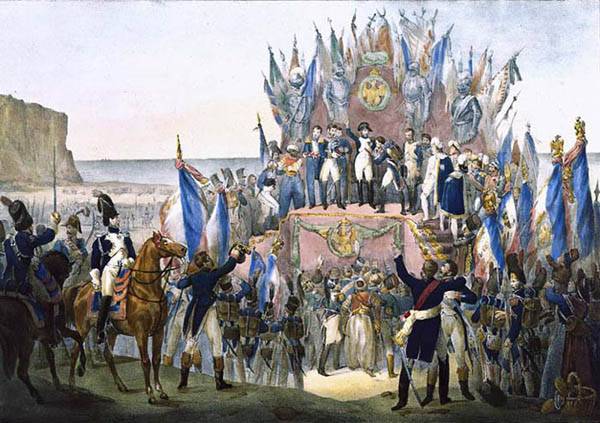
L’ordre national de la Légion d'honneur est l'institution qui, sous l'égide du grand chancelier et du grand maître, est chargée de décerner la plus haute décoration honorifique française. Instituée le 19 mai 1802 par Napoléon Bonaparte, elle récompense depuis ses origines les militaires comme les civils ayant rendu des « services éminents » à la Nation.
Romaine par son nom (inspirée par la Legio honoratorum conscripta de l'Antiquité), par son symbolisme (les aigles) et son organisation (seize cohortes pour la France), la Légion d'honneur infléchit la tradition des ordres d'Ancien Régime en étant ouverte à tous, et non plus seulement aux officiers Alors que certains, comme le ministre de la Guerre Berthier, y voient une atteinte au principe de l'égalité civique et considèrent les décorations comme des hochets de la monarchie, Bonaparte justifie cette institution en conseil d'État : Je vous défie de me montrer une république, ancienne ou moderne, qui sût se faire sans distinctions. Vous les appelez les hochets, eh bien c'est avec des hochets que l'on mène les hommes.
La Révolution française avait en effet aboli toutes les décorations de l'Ancien Régime. L'Assemblée constituante avait créé la Décoration militaire, bientôt elle aussi supprimée. Sous la Convention, les généraux avaient pris pour habitude d'attribuer des armes d'honneur (fusil d'honneur, sabre d'honneur, ou encore tambour d'honneur) pour récompenser les actes de bravoure.
The National Order of the Legion of Honor is the institution which, under the aegis of the Grand Chancellor and the Grand Master, is responsible for awarding the highest French honorary decoration. Established on May 19, 1802 by Napoleon Bonaparte, it has since its origins rewarded both soldiers and civilians who have rendered "eminent service" to the Nation. Roman by name (inspired by the Legio honoratorum conscripta of Antiquity), by its symbolism (the eagles) and its organization (sixteen cohorts for France), the Legion of Honor bends the tradition of the orders of the Ancien Régime by being open to all, and no longer just to officers While some, like the Minister of War Berthier, saw in it an attack on the principle of civic equality and considered the decorations to be rattles of the monarchy, Bonaparte justified this institution by Council of State: I challenge you to show me a republic, ancient or modern, which could be made without distinctions. You call them rattles, well, it is with rattles that men are led. The French Revolution had indeed abolished all the decorations of the Old Regime. The Constituent Assembly had created the Military Decoration, which was also soon abolished. Under the Convention, the generals had taken the habit of awarding arms of honor (rifle of honor, saber of honor, or drum of honor) to reward acts of bravery.








